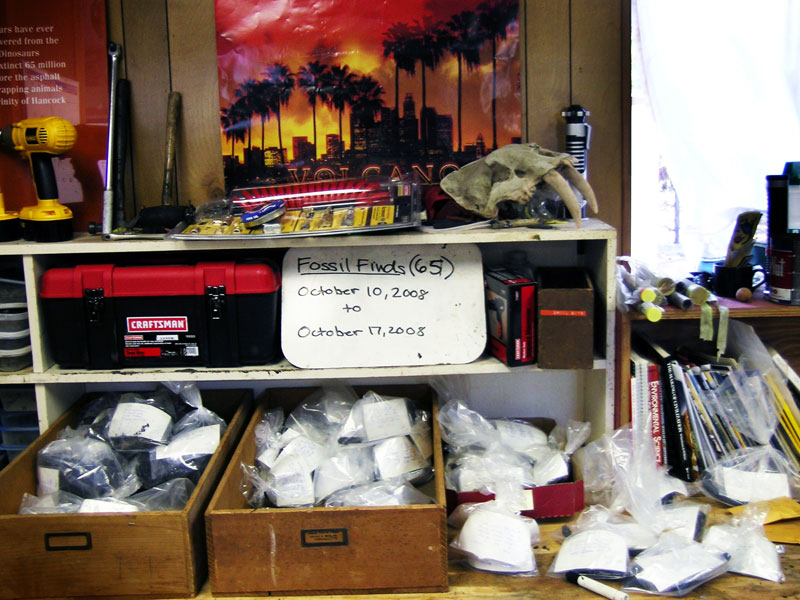 Yeah, it's messy, but does your office have lightsabers and power tools on the same shelf?
Yeah, it's messy, but does your office have lightsabers and power tools on the same shelf?
We're gonna try to make this weekly update thing happen, like, every week. On Fridays. But not this past Friday, because Blogger ate my last update before it posted properly (curse you, Google...). Thus, we're a little behind, so this is more of a The-Past-Two-or-Three-Weeks update.
So, The Past-Two-or-Three-Weeksly tally:
- 120 bones measured out between Oct 10 - 24
notable finds:
- the coracoid of a
Teratornis merriami (Merriam's teratorn). Teratorn's were huge birds of prey; their name means "monster bird" in Greek; they had a 13' wingspan; and they looked kind of like gigantic condor-vulture hybrids.
- the radius of a
Capromeryx (dwarf pronghorn)
- again, a whole grip of ribs from a whole bunch of animals, all laying on top of each other. Excavating them has been like playing pick-up sticks in a graveyard, but we finally got at least a dozen out of the way, including three complete vertebral (as opposed to sternal) ribs.
- several Giant Ground Sloth caudal (tail) vertebrae and haemal arches (mini-psuedo-vertebrae that articulate with the underside of caudal verterbae)
- the semi-complete underside of a turtle shell. This was found in a section of the deposit that we previously thought was sterile, which is very, very good news -- more bones means less boring fossil-less dirt to dig through.
- Dogs and cats are peacefully co-habitating in grid B-1; we've found 3 dire wolf skulls so far (2 are pictured below), various bones from at least 2 coyotes, various bones from at least 2 saber-toothed cats, and as Ryan previously posted, the skull of a North American lion has been uncovered, but not yet excavated.
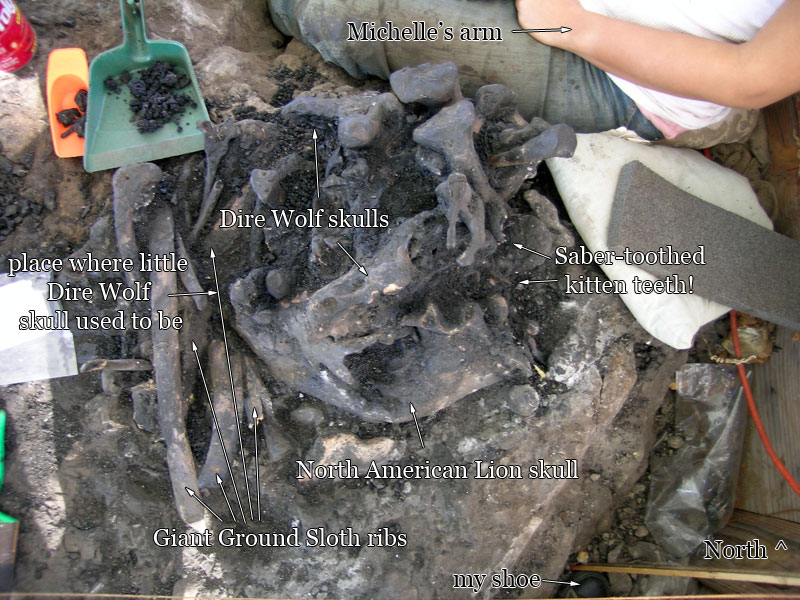 Grid B-1, Level 2, as of October 24, 2008
Grid B-1, Level 2, as of October 24, 2008
One of the dire wolf skulls (from a particularly old individual -- his teeth are worn down almost to the root) is directly on top of the lion skull.
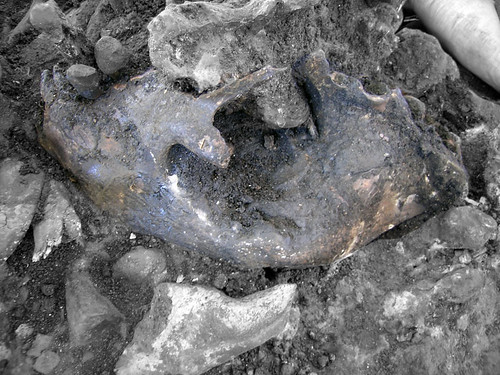
highlight of the north american lion skull. mouse-over for the highlight of the dire wolf (if the image doesn't immediately shift, wait a few moments for it to load, and try again).
- as I previously posted, the saber of a saber-toothed kitten has been exposed.
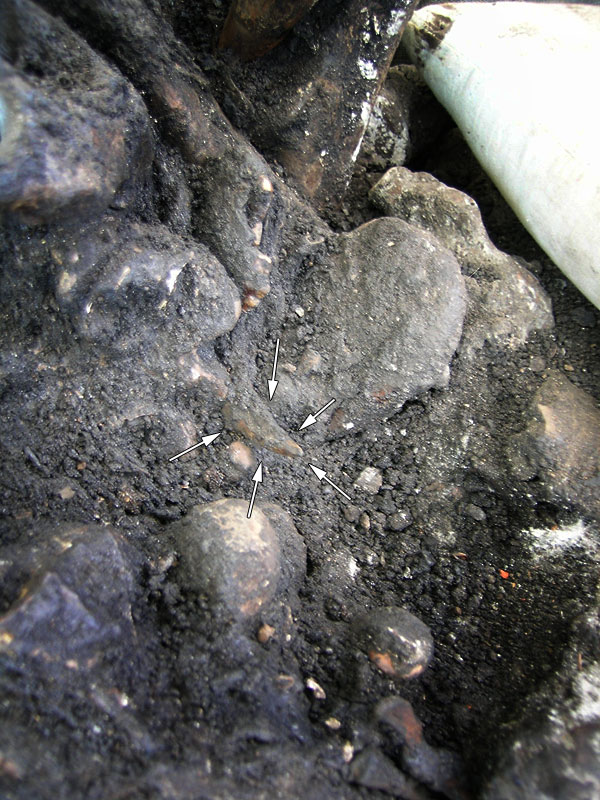 look!
look!As you can see, saber-toothed cats were born with little sabers, which makes one particularly pity the saber-toothed mothers...
notable events:
- After months of excavation, Kristen got the giant ground sloth scapulas out!!

and grid B-2 has gone from this:
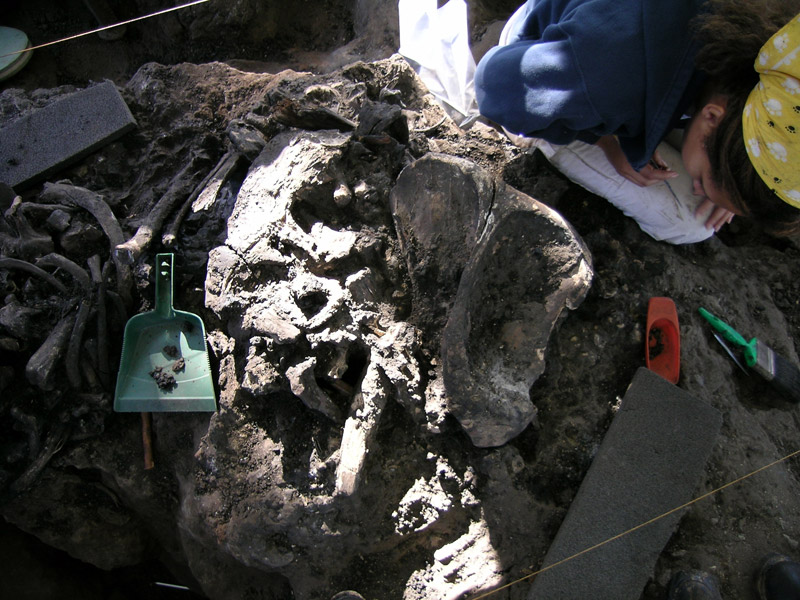
to this:
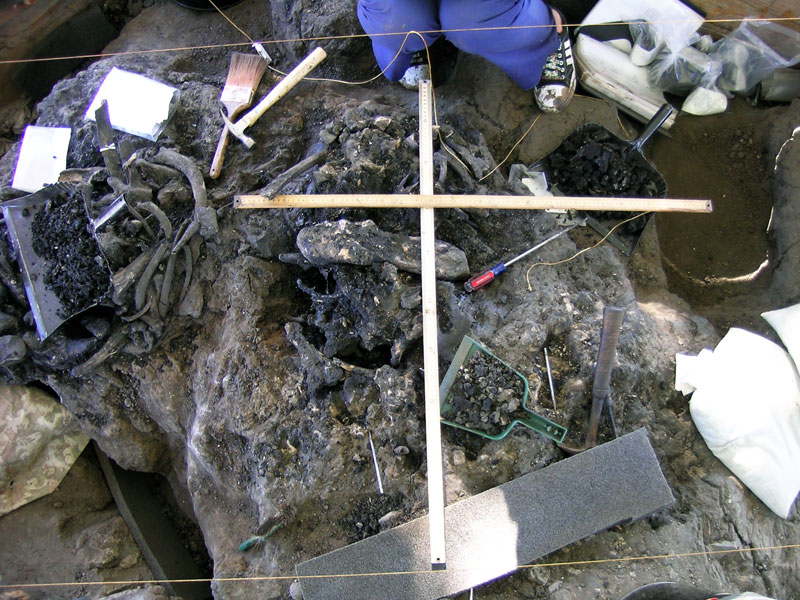
That's a giant ground sloth ulna in the center. Eventually, I hope to plot the location of all sloth bones in Deposit 1 to get a better idea of how, exactly, the animal's skeleton fell apart.
Once again: progress!


















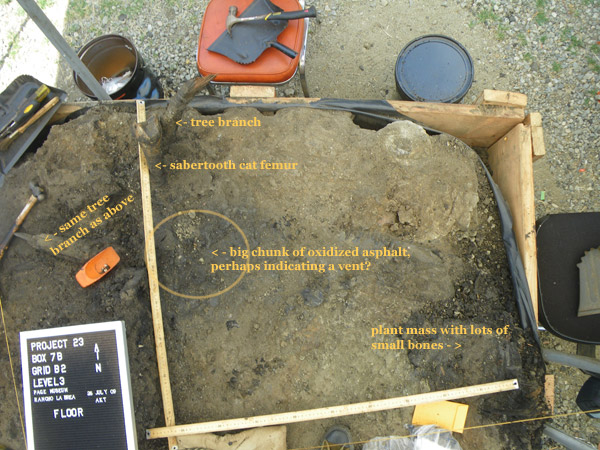
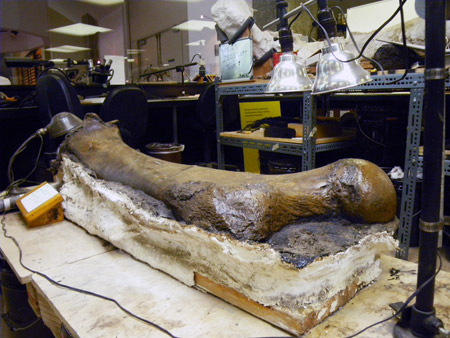







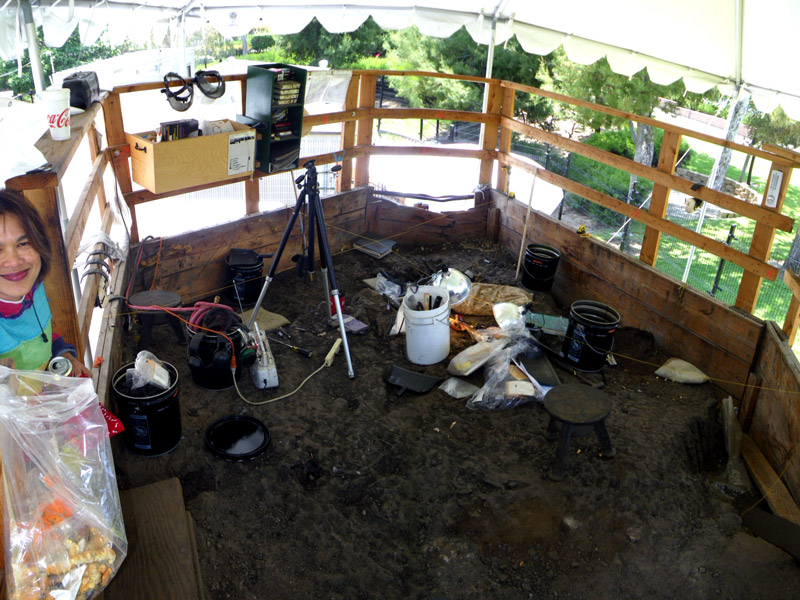
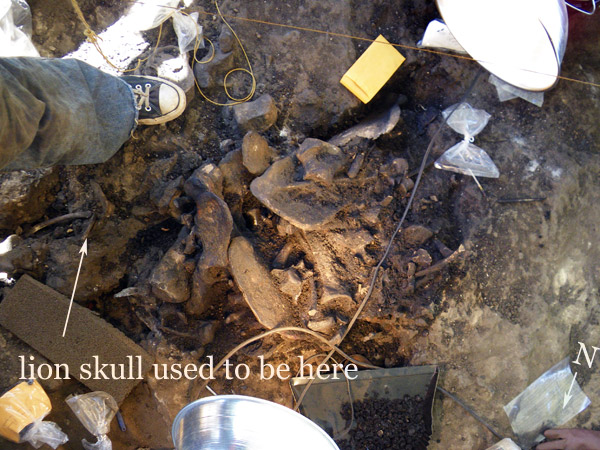
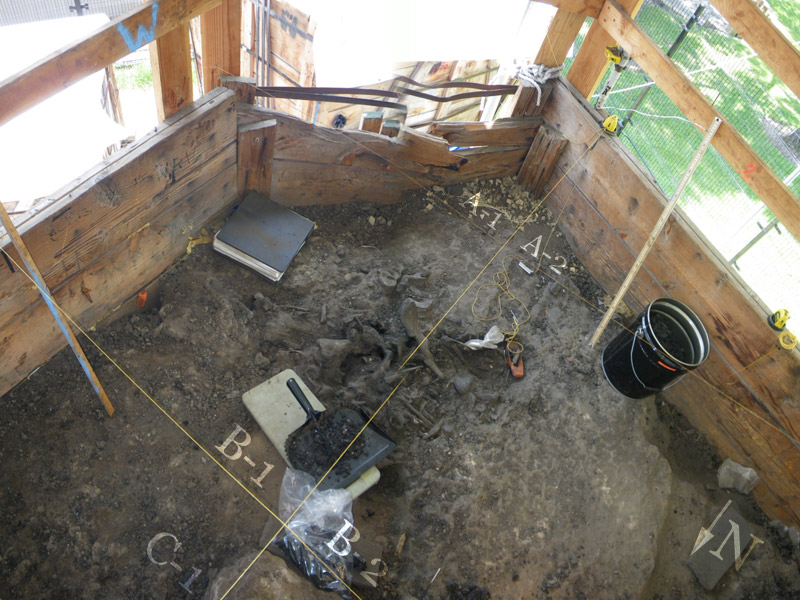
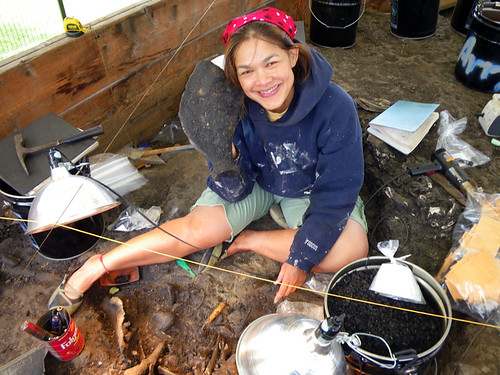

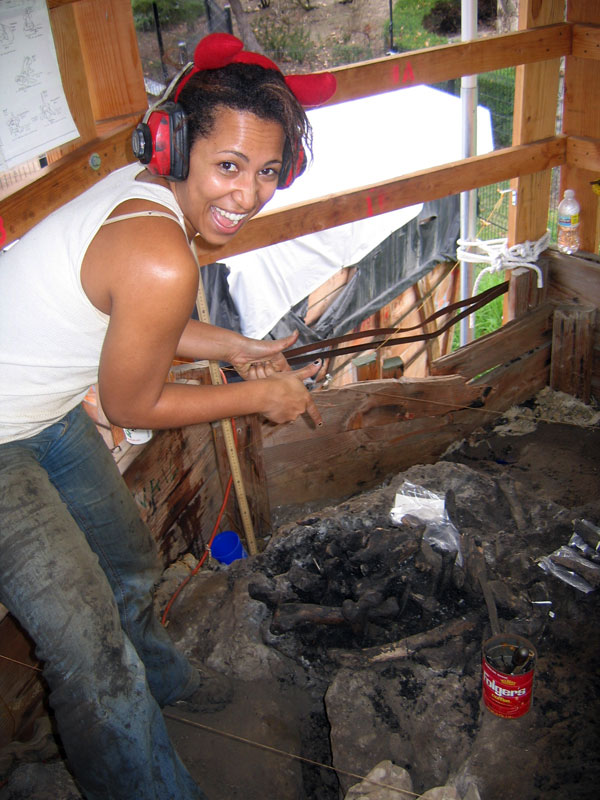
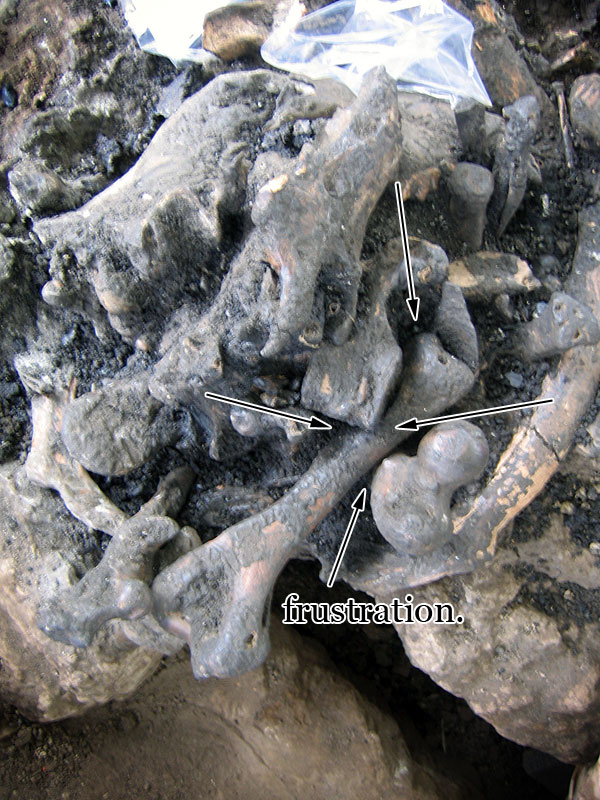

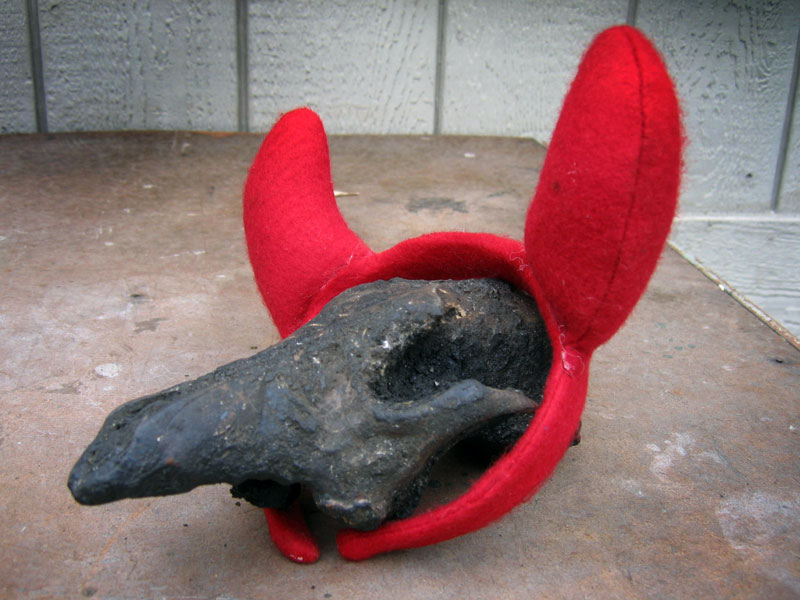










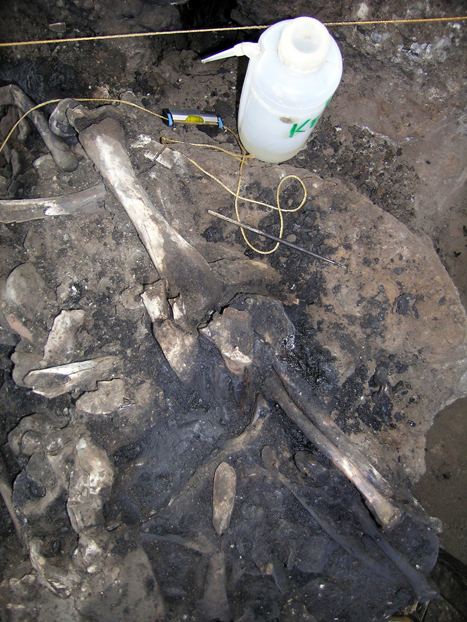
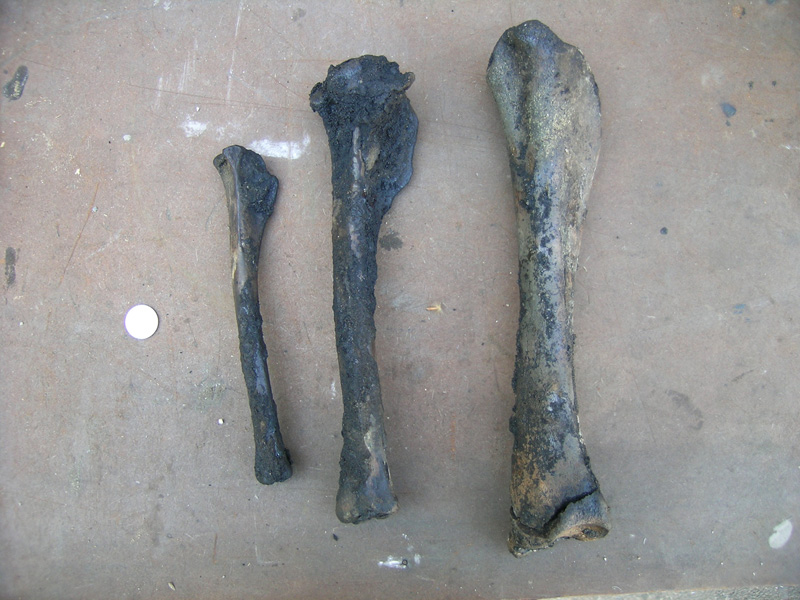 From left to right, you're looking at lower right hind leg bones of a coyote, a dire wolf, and a young saber-toothed cat.
From left to right, you're looking at lower right hind leg bones of a coyote, a dire wolf, and a young saber-toothed cat. 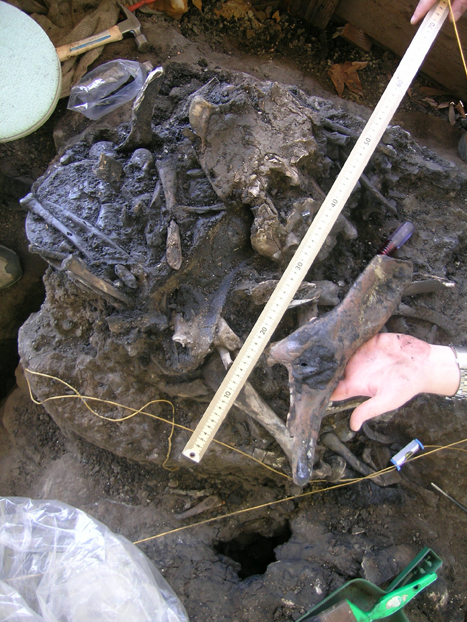 Note the pelvis-shaped impression in the ground to the left.
Note the pelvis-shaped impression in the ground to the left.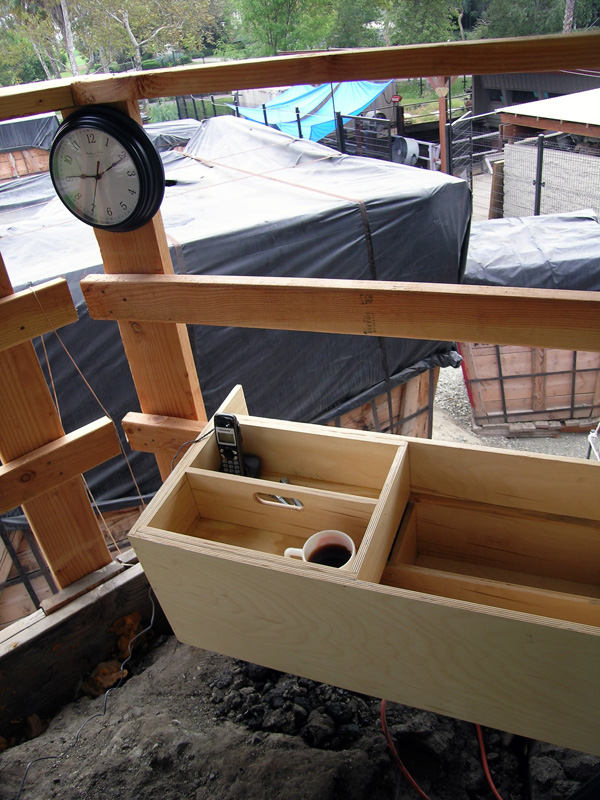 which now holds our brand new phone, our brand new field notebooks, our brand new meter sticks, our really-old-but-still-totally-useful comparative collection of dire wolf and saber-toothed cat carpals and tarsals (wrist and ankle bones), and, apparently, my three-hour-old cup of coffee.
which now holds our brand new phone, our brand new field notebooks, our brand new meter sticks, our really-old-but-still-totally-useful comparative collection of dire wolf and saber-toothed cat carpals and tarsals (wrist and ankle bones), and, apparently, my three-hour-old cup of coffee.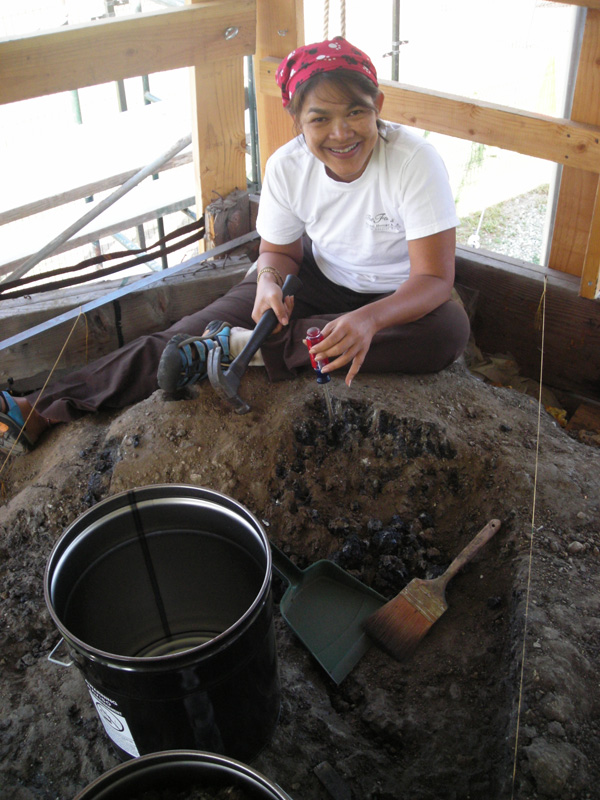
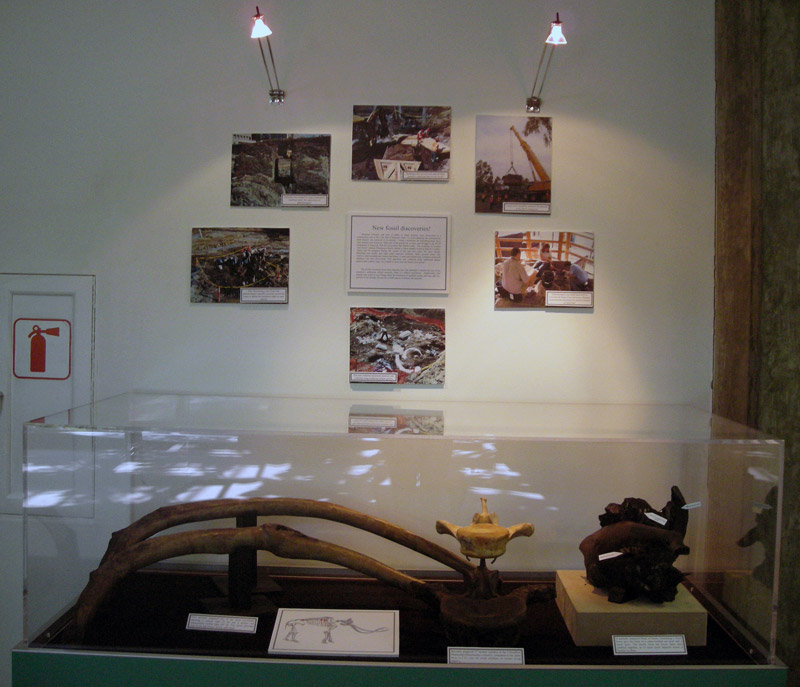
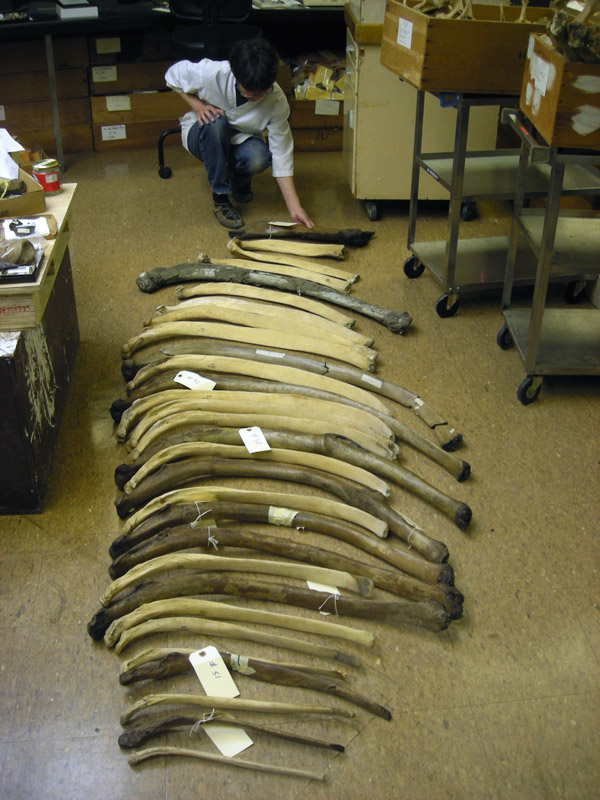 Shelley borrowed an Asian elephant skeleton from the Natural History Museum and has been using it to help identify Zed's (much larger, but still comparable) elements. In the photo above, Shelley is comparing Zed's ribs to Jenny's (Zed's are La Brea brown; Jenny's are white).
Shelley borrowed an Asian elephant skeleton from the Natural History Museum and has been using it to help identify Zed's (much larger, but still comparable) elements. In the photo above, Shelley is comparing Zed's ribs to Jenny's (Zed's are La Brea brown; Jenny's are white).

